On a slightly crisp December day, I went to the
National Army Museum in Chelsea.
This suffers slightly from under-lighting but I did my best with
the cameras.
Wooden spoon awarded to the worst shot (1910-1939), among a display of
issue rifles and training times.
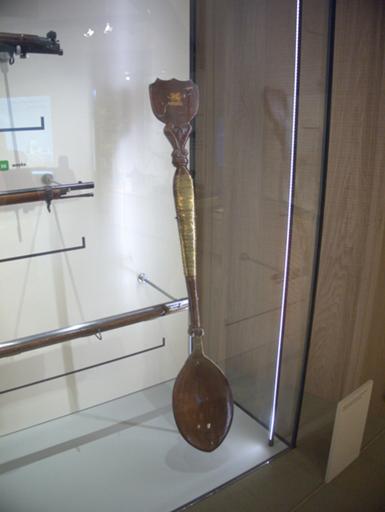
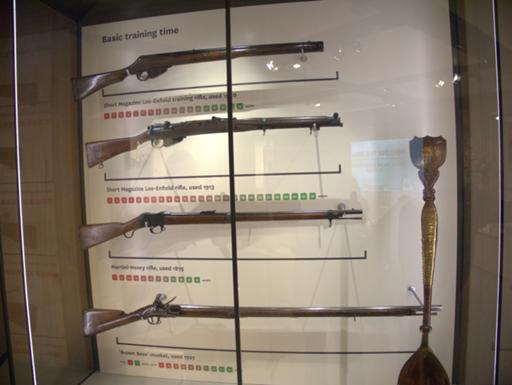
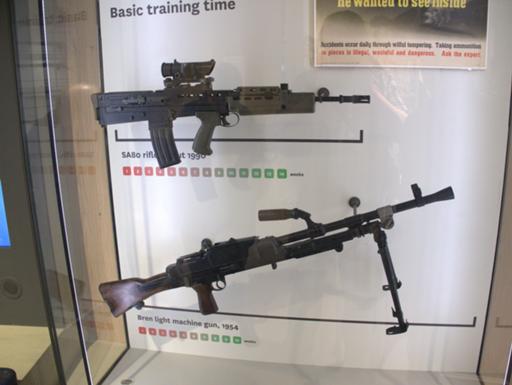
Cleaning kit circa 1916, including original Blanco.
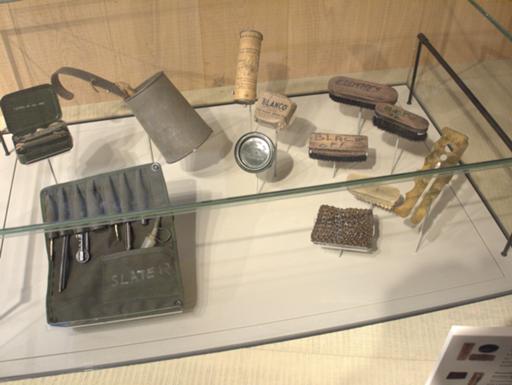
Various sporting trophies.
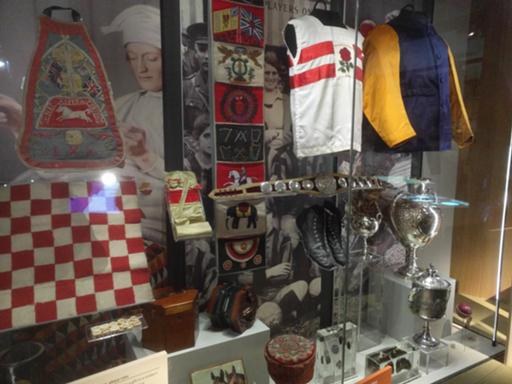
An array of headgear (the best I could do with all the reflections).
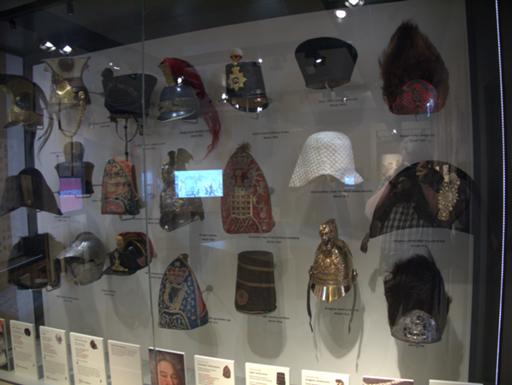
Regimental cruets and such like.
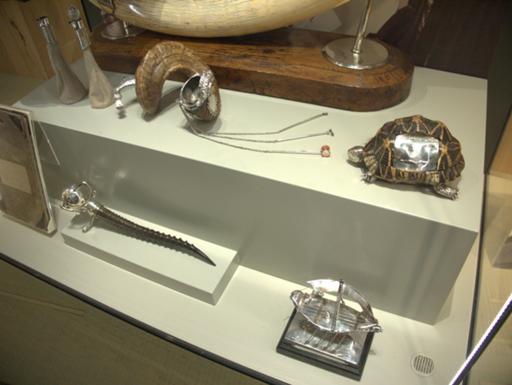
Gratuitous pie chart abuse. (These show the proportion by weight of a
soldier's diet that was protein, fat or carbohydrate… but the total
weight varies.) I'm increasingly of the opinion that pie charts are
the wrong answer for any problem of data presentation.
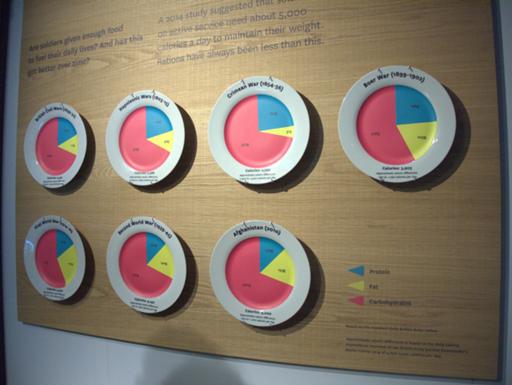
Issue biscuit. The lower ones are from the Great War; no label for the
upper, brown, one, but it looked very like the ship's biscuit a friend
of mine made a few years ago.
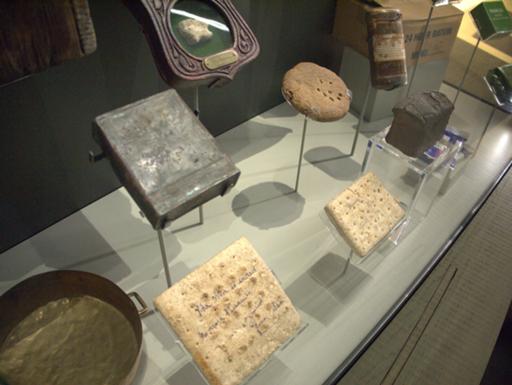
Captured Italian bayonet (WWII); handle replaced with Perspex
enclosing picture of new owner's girlfriend.
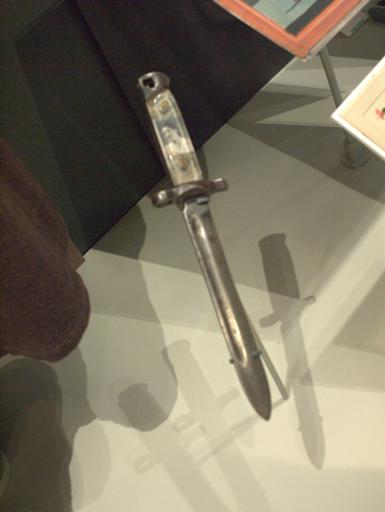
How to motivate the troops: if you put it about too much, we might
keep you in for longer.
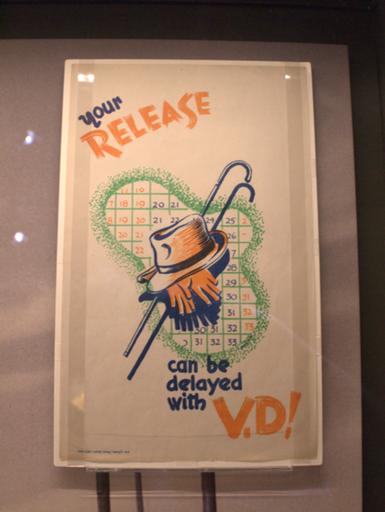
Farrier's axe.
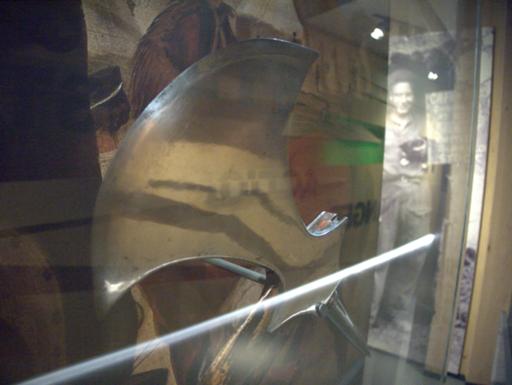
First World War medals.
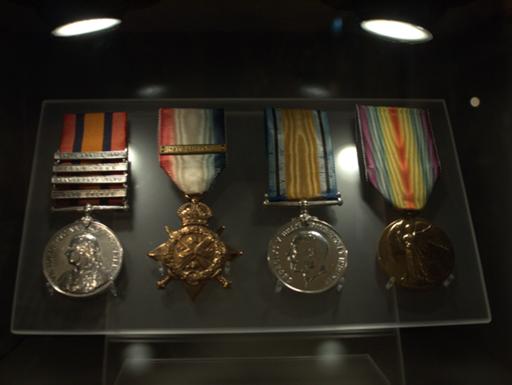
Medals awarded to, and cap badge of, William Cotter, 1916.
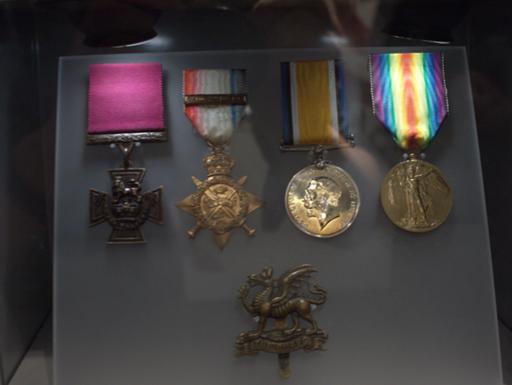
Civil War cavalry swords.
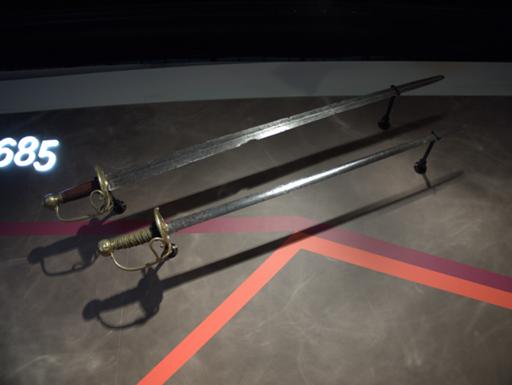
Cap badges of the Great War.
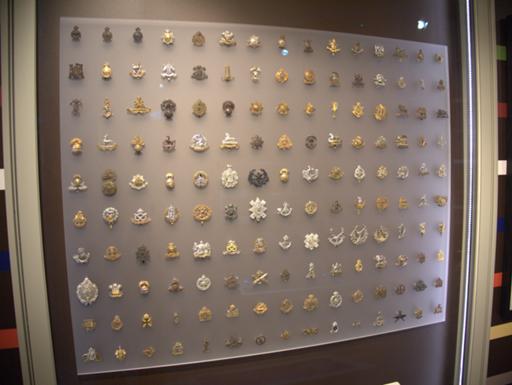
Various items from UN operations in ex-Yugoslavia.
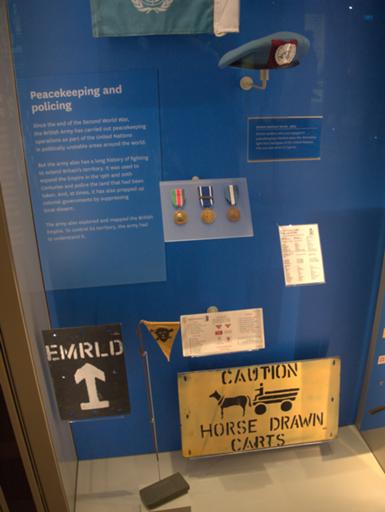
Recruiting posters.
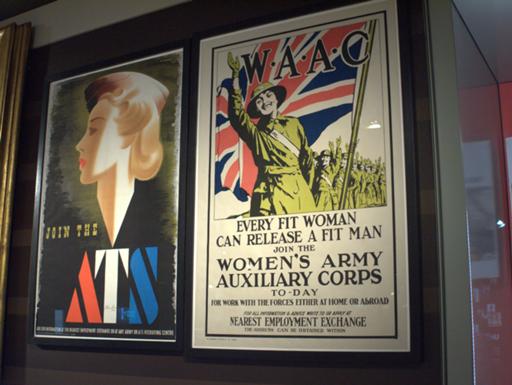
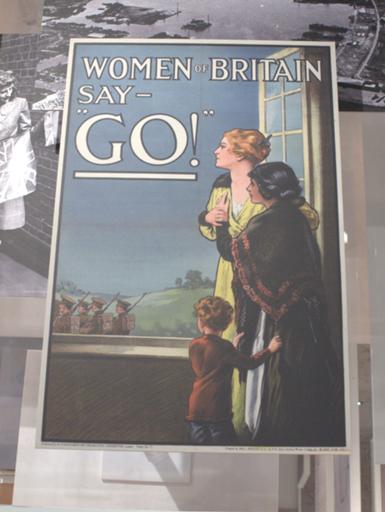
Probably an ivory chess set, though not displayed as such.
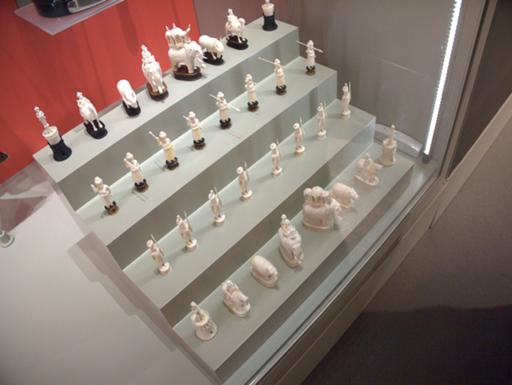
Home-made sub-machinegun of the IRA.
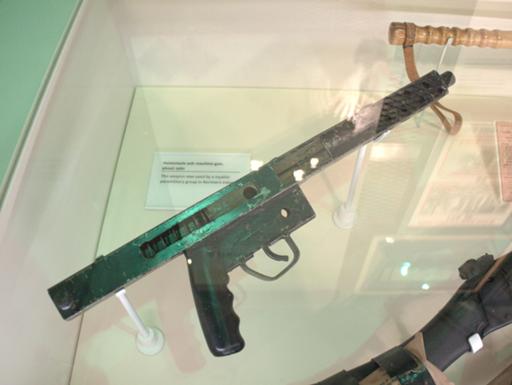
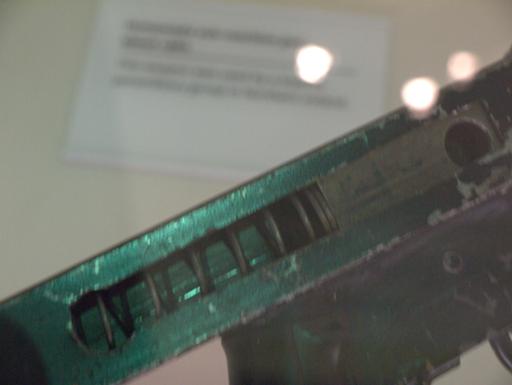
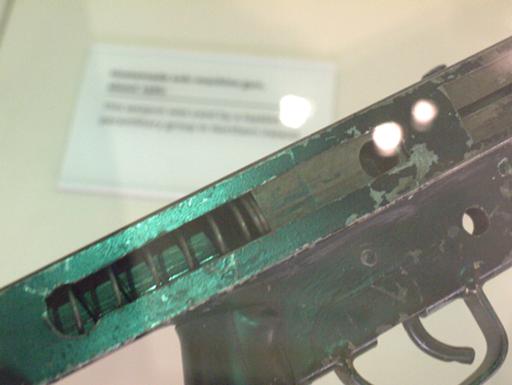
The infamous Pig.
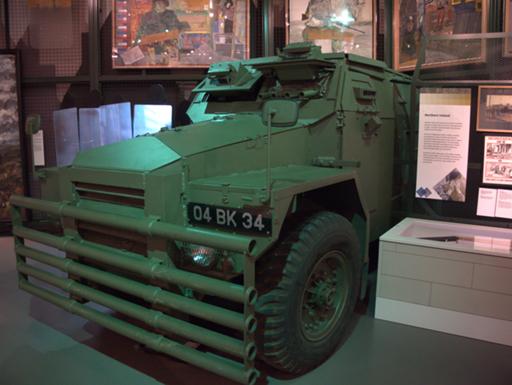
Looks rather more Heinleinian now than was intended at the time.
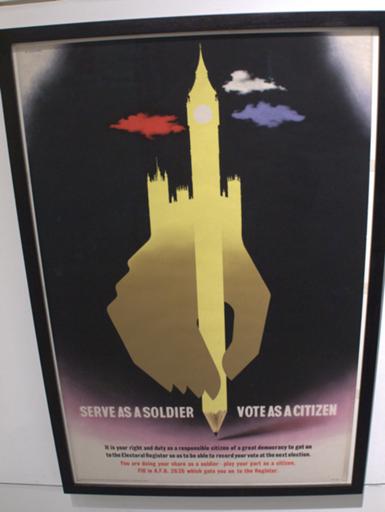
This captures its cultural era (1960) perfectly. "We're not saying
you're going to meet a handsome officer, but…"
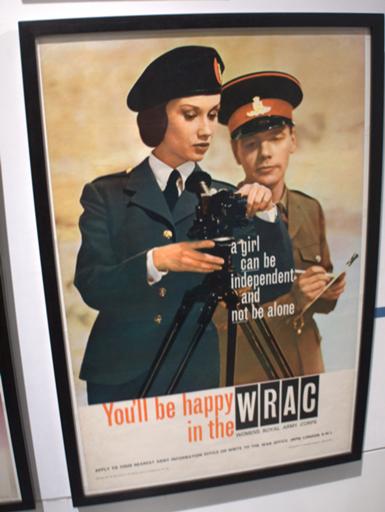
Early Wheelbarrow ROV. (That looks a lot like a beer keg to be placed
on top of something dodgy, but the bottom's not open. Sand?)
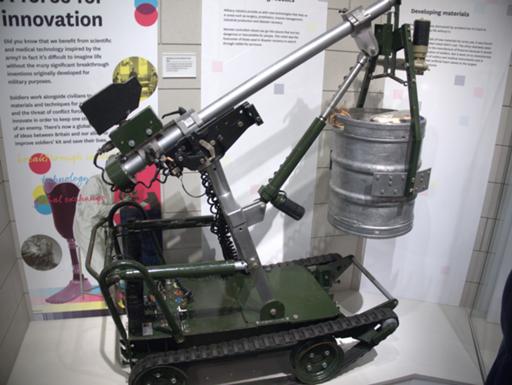
Tie-in food marketing.
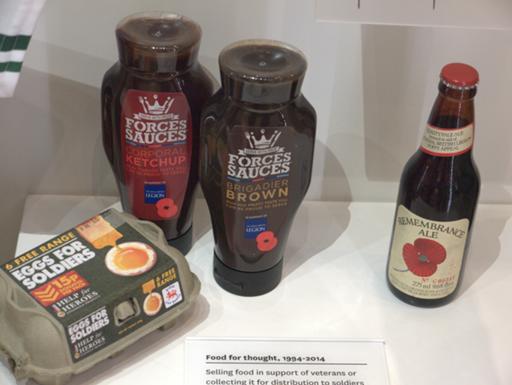
Great War recruiting poster.
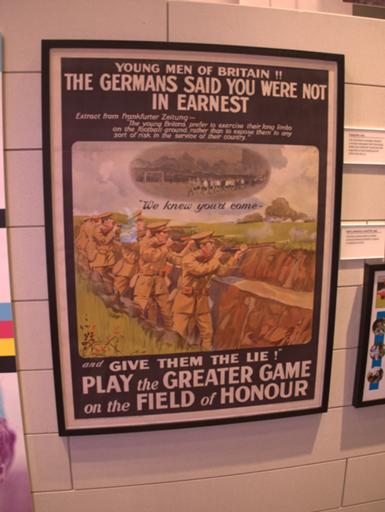
Coehoorn mortar, 1816.
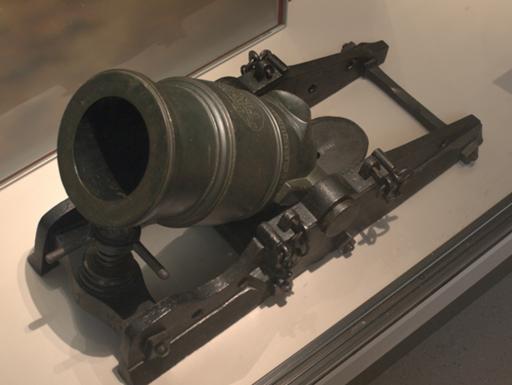
Horse-pistols.
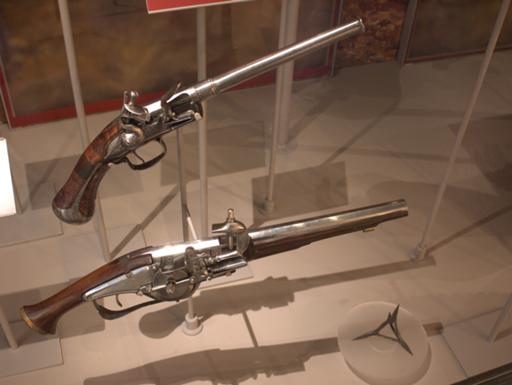
The field of Waterloo.
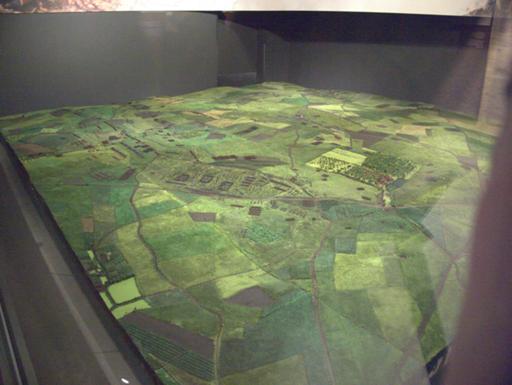
Napoleon's horse. (Captured at the battle, and preserved after it died
some years later.)
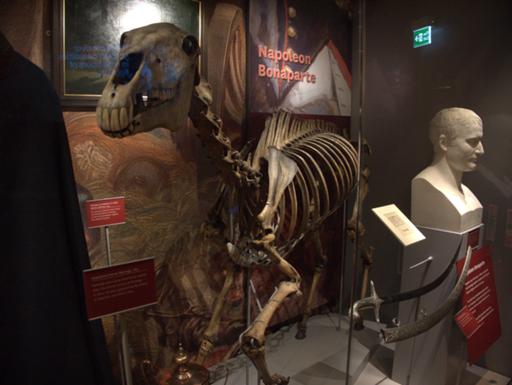
Surprisingly complex Martini-Henry cartridge.
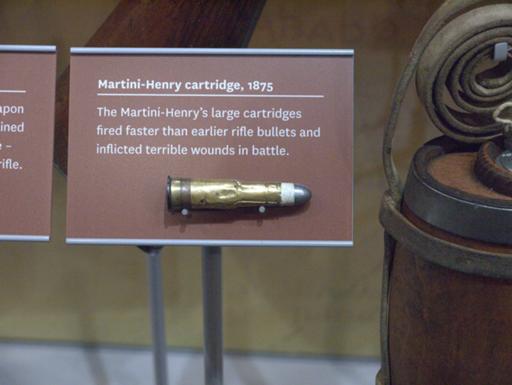
An array of various weaponry.
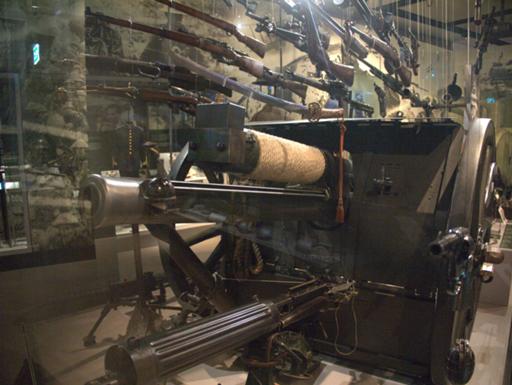
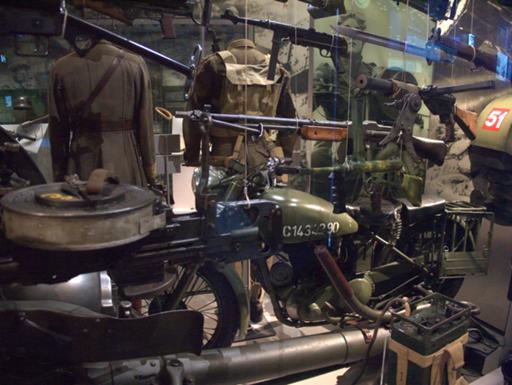
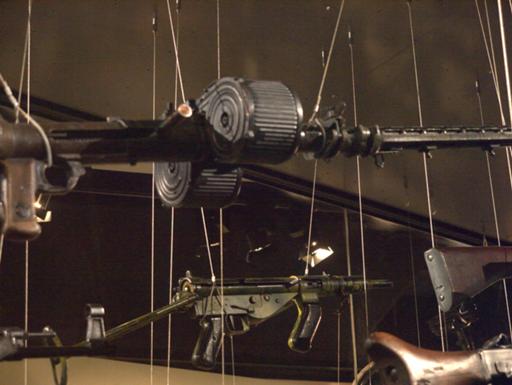
German weapons of the Great War, including the Bergmann sub-machinegun.
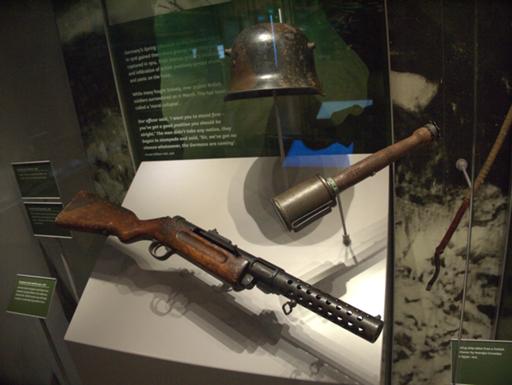
PIAT, Boys rifle, and Panzerbüchse.
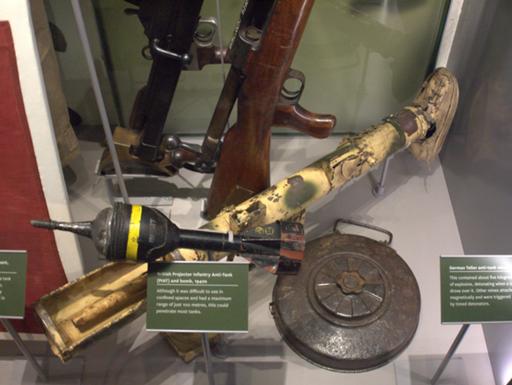
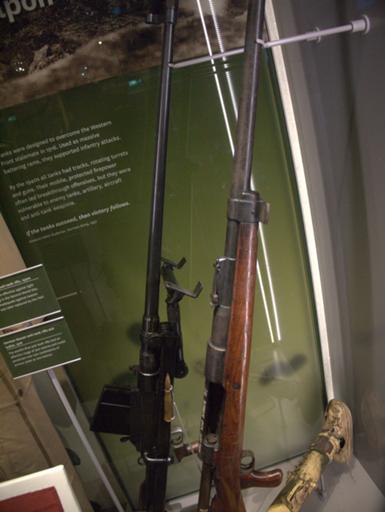
Military slide rule, with scales for working out how long it will take
a column to pass a point. (1940s.)
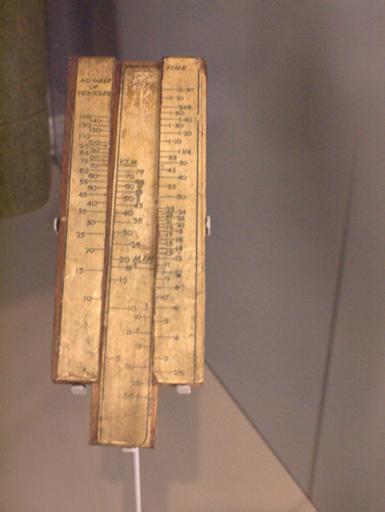
A gun made by the Mau Mau – that operating mechanism looks to me an
awful lot like a conventional gate bolt.
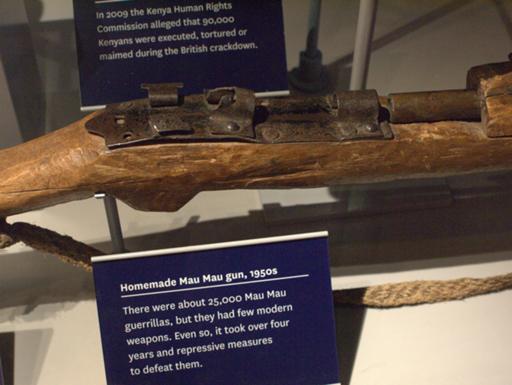
Even the toilet signs are customised.
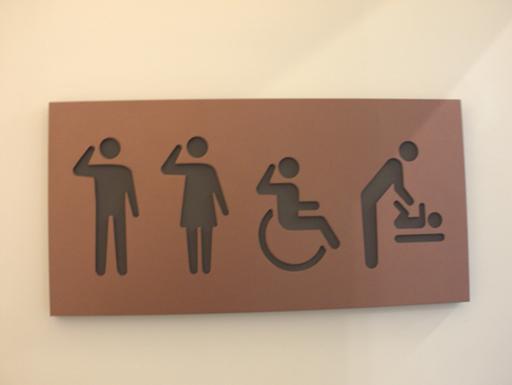
Sikh war turban.
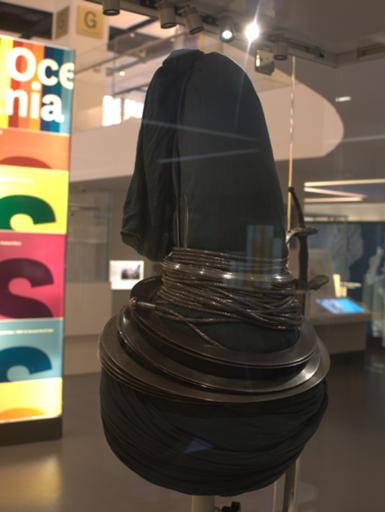
Ashanti warrior's cap - made from a local rat, plus sea shells.
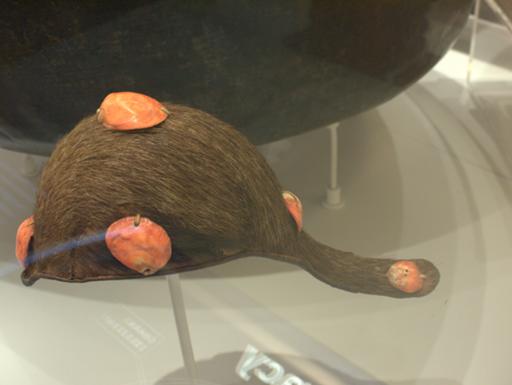
Royal Hospital in the sunset.
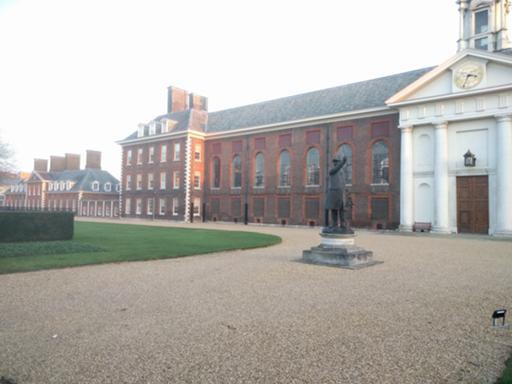
Overall I thought this was rather lighter on stuff than some
museums, but did a good job of presenting it in context.
- Posted by Chris Bell at
10:36am on
29 December 2018
Marengo was the name of Napoleon's horse. Did they mention this and you simply didn't remember, or is it ignored?
There was a BBC comedy series called Warhorses of Letters about his purported correspondence with Copenhagen.
- Posted by John Dallman at
11:27am on
29 December 2018
Ah, they don't mention that Martini-Henry cartridge came apart in the breech rather too often. Hand-made cartridges rolled out of flat brass foil are just too fragile. It was replaced by a drawn cartridge case, more expensive, but much more reliable.
- Posted by Dr Bob at
01:36pm on
29 December 2018
Interesting. The National Army Museum is on my list of places to go see if I can ever afford a holiday in London.
- Posted by RogerBW at
02:24pm on
29 December 2018
Chris, yes, it was on the label.
John, I was surprised by the complexity of the shape of the Martini-Henry cartridge - usually cartridges of that petiod look much simpler. A sign of technological overstretch?
Dr Bob, when you plan such a trip, give me a shout. For central London, this, the Wallace Collection and the IWM would be at the top of my list.
- Posted by Chris Suslowicz at
08:40pm on
29 December 2018
The "Mau Mau Rifle"is not a functional weapon, and I've seen it somewhere before (possibly the South Wales Borderers museum, back in the 1970s). Yes, it's a gate bolt, there's no firing mechanism or any attempt at a sealed breech and the explanation I saw was that they were "magic" weapons, which together with some suitable spells and potions would make the wielder immune to gunfire.
There were other rather more functional improvised weapons, such as a shotgun made from welded pipe (electrical conduit?) that the owner dropped a cartridge into the rear of the barrel section,slipped that over the rod on the stock, and slammed the two together to fire it. Sooner them than me!
Chris.
- Posted by RogerBW at
11:22pm on
29 December 2018
Chris, thanks – that makes sense, certainly, though I would have expected the symbolism would be to strike the enemy dead at a distance rather than to protect the wielder.
There have been some pretty terrible designs sold commercially too – don't know if you know forgottenweapons.com, but I commend to your attention the video on the Cobray Terminator ("possibly the worst shotgun ever made") which sounds a lot like what you describe.
- Posted by Chris Suslowicz at
11:53pm on
29 December 2018
I didn't need to watch the video, just an image of the RHS of that "piece" was enough.
My description of that would be "A single-shot version of the STEN, but in 12-bore." followed by "What had the entire company been smoking?"
"Ouch,"
Chris.
- Posted by Gus at
11:47pm on
31 December 2018
addendum:
made from a well-respected local rat.
Greatly taken with that cap, I am
Happy New Year
Gus
- Posted by RogerBW at
11:50pm on
31 December 2018
Thryonomys swinderianus, the Greater Cane Rat or Grasscutter; they get up to two feet long.
I do picture the emperor laughing up his sleeve at getting his toughest warriors to fight for the privilege of wearing rats on their heads.
- Posted by John Dallman at
08:04pm on
01 January 2019
I can't find my good book on British small arms ammo, but it seems that the original Martini-Henry cartridge was a minimum-change job from the previous .557 Snider cartridge. That used the same separate base and rolled foil construction, but was straight-walled.
The bottle-neck seems to have been occasioned by the desire for a smaller calibre, for the usual reasons. It's possible they wanted to keep the same hand production line going, rather than buying lots of drawing machinery.
Comments on this post are now closed. If you have particular grounds for adding a late comment, comment on a more recent post quoting the URL of this one.